Wh to mAh: Easy Battery Conversion
ZacharyWilliamWritten by the Technical Power Systems Team — With over a decade of experience in battery technology, portable energy systems, and power electronics, our engineers have worked extensively on lithium battery design, testing, and real-world deployment. This guide is based on verified electrical engineering principles, practical field data, and standard industry conversion formulas.
What Is Wh to mAh?
Before diving into the conversion process, it’s essential to understand what Watt-hours (Wh) and milliamp-hours (mAh) actually represent. Wh is a measure of energy: it tells you how many watts a battery can deliver over the course of one hour. mAh, on the other hand, measures electrical charge — specifically, how many milliamps a battery can provide for one hour. While both are related, they describe different aspects of battery performance.

The link between them lies in voltage. Without knowing the battery's voltage, you cannot accurately convert between Wh and mAh. For example, a battery with 10 Wh of energy could have different mAh values depending on whether it operates at 3.7V, 5V, or 12V. That’s why you should always account for nominal voltage before making conversions. A common misunderstanding occurs when people compare devices solely by mAh without realizing that voltage changes the relationship between Wh and mAh.
From a practical perspective, Wh is the more universal unit because it takes both voltage and capacity into account. This means that a 50 Wh battery at 12V stores the same amount of energy as a 50 Wh battery at 3.7V — even though the mAh values will differ dramatically. Understanding this helps you make fair comparisons between devices, estimate run times, and determine if a particular battery system meets your needs. This is especially important when planning to power specific devices like portable fridges, LED lighting, or communication equipment.
How to Convert Wh to mAh?
The formula to convert Wh to mAh is straightforward:
mAh = (Wh × 1000) ÷ VoltageHere’s what each term means:
- Wh — the battery's total stored energy.
- Voltage — the battery's nominal voltage (typical lithium-ion cells are around 3.6–3.7V).
- 1000 — converts amp-hours (Ah) to milliamp-hours (mAh).
Example: Suppose you have a battery rated at 50 Wh with a nominal voltage of 3.7V. Using the formula: mAh = (50 × 1000) ÷ 3.7 ≈ 13,514 mAh. This means your battery can theoretically supply about 13,514 milliamps for one hour at 3.7V.
The Wh to mAh Conversion Table (at 3.7V)
| Watt Hours (Wh) | Voltage (V) | Milliamp Hours (mAh) |
|---|---|---|
| 0.5 Wh | 3.7 V | 135.14 mAh |
| 1 Wh | 3.7 V | 270.27 mAh |
| 2 Wh | 3.7 V | 540.54 mAh |
| 5 Wh | 3.7 V | 1,351.35 mAh |
| 10 Wh | 3.7 V | 2,702.70 mAh |
| 20 Wh | 3.7 V | 5,405.41 mAh |
| 25 Wh | 3.7 V | 6,756.76 mAh |
| 40 Wh | 3.7 V | 10,810.81 mAh |
| 45 Wh | 3.7 V | 12,162.16 mAh |
| 50 Wh | 3.7 V | 13,513.51 mAh |
| 72 Wh | 3.7 V | 19,459.46 mAh |
| 75 Wh | 3.7 V | 20,270.27 mAh |
| 100 Wh | 3.7 V | 27,027.03 mAh |
| 150 Wh | 3.7 V | 40,540.54 mAh |
| 200 Wh | 3.7 V | 54,054.05 mAh |
| 256 Wh | 3.7 V | 69,189.19 mAh |
| 300 Wh | 3.7 V | 81,081.08 mAh |
| 400 Wh | 3.7 V | 108,108.11 mAh |
| 500 Wh | 3.7 V | 135,135.14 mAh |
| 750 Wh | 3.7 V | 202,702.70 mAh |
| 1000 Wh | 3.7 V | 270,270.27 mAh |
Note: These values are based on a nominal voltage of 3.7V (typical for lithium-ion cells). If your battery operates at a different voltage, replace 3.7 with your actual voltage in the formula: mAh = (Wh × 1000) ÷ Voltage. Real-world usable capacity will be slightly lower due to conversion losses and efficiency factors.
It’s worth noting that this is a theoretical value under ideal conditions. In real-world applications, efficiency losses will occur. Voltage conversion (e.g., from 3.7V battery voltage to 5V USB output) typically results in 10–15% energy loss. This explains why a battery rated for a certain mAh may deliver less charge to your device than the raw calculation suggests.
Always remember: to compare batteries fairly, perform this conversion so you can see their capacity in the same unit under consistent voltage conditions.
How to Convert mAh to Wh?
Converting mAh to Wh is simply the reverse of the previous calculation:
Wh = (mAh × Voltage) ÷ 1000Example: You have a 20,000 mAh battery with a nominal voltage of 3.7V: Wh = (20,000 × 3.7) ÷ 1000 = 74 Wh. This tells you the battery contains 74 watt-hours of energy. If your device uses 10W continuously, you could theoretically power it for 7.4 hours.
This formula is important because many consumer electronics advertise battery capacity in mAh without mentioning voltage. Without converting to Wh, you can’t easily compare batteries of different voltages. For instance, a 20,000 mAh battery at 3.7V does not store the same energy as a 20,000 mAh battery at 12V — the latter stores more than three times as much energy in Wh.
The mAh to Wh Conversion Table (at 3.7V)
| Milliamp Hours (mAh) | Voltage (V) | Watt Hours (Wh) |
|---|---|---|
| 1 mAh | 3.7 V | 0.0037 Wh |
| 10 mAh | 3.7 V | 0.037 Wh |
| 50 mAh | 3.7 V | 0.185 Wh |
| 100 mAh | 3.7 V | 0.37 Wh |
| 500 mAh | 3.7 V | 1.85 Wh |
| 1000 mAh | 3.7 V | 3.70 Wh |
| 1200 mAh | 3.7 V | 4.44 Wh |
| 1500 mAh | 3.7 V | 5.55 Wh |
| 2000 mAh | 3.7 V | 7.40 Wh |
| 2500 mAh | 3.7 V | 9.25 Wh |
| 3000 mAh | 3.7 V | 11.10 Wh |
| 4000 mAh | 3.7 V | 14.80 Wh |
| 4500 mAh | 3.7 V | 16.65 Wh |
| 5000 mAh | 3.7 V | 18.50 Wh |
| 6000 mAh | 3.7 V | 22.20 Wh |
| 8000 mAh | 3.7 V | 29.60 Wh |
| 10000 mAh | 3.7 V | 37.00 Wh |
| 12000 mAh | 3.7 V | 44.40 Wh |
| 15000 mAh | 3.7 V | 55.50 Wh |
| 20000 mAh | 3.7 V | 74.00 Wh |
| 24000 mAh | 3.7 V | 88.80 Wh |
| 30000 mAh | 3.7 V | 111.00 Wh |
| 40000 mAh | 3.7 V | 148.00 Wh |
| 50000 mAh | 3.7 V | 185.00 Wh |
| 60000 mAh | 3.7 V | 222.00 Wh |
| 75000 mAh | 3.7 V | 277.50 Wh |
| 100000 mAh | 3.7 V | 370.00 Wh |
| 150000 mAh | 3.7 V | 555.00 Wh |
| 200000 mAh | 3.7 V | 740.00 Wh |
Note: These values assume a nominal voltage of 3.7V (common for lithium-ion cells). If your battery operates at a different voltage, replace 3.7 with your actual voltage in the formula: Wh = (mAh × Voltage) ÷ 1000. Real-world usable capacity will be slightly lower due to conversion losses and efficiency factors.
Understanding this conversion helps you make informed purchasing decisions and ensures you have realistic expectations for battery runtime in various applications.
How to Convert kWh to mAh?
For larger systems, capacities are often given in kilowatt-hours (kWh). Since 1 kWh = 1000 Wh, you can adapt the formula accordingly:
mAh = (kWh × 1000 × 1000) ÷ VoltageExample: A 1 kWh battery at 12V: mAh = (1 × 1000 × 1000) ÷ 12 ≈ 83,333 mAh.
This is a very large number compared to small device batteries, but it’s correct for that voltage. If you used a higher voltage battery, say 48V, the mAh value would be lower because mAh is inversely proportional to voltage for a given energy capacity. This is why high-voltage systems (like those in solar storage or electric vehicles) have smaller mAh ratings but store large amounts of energy in Wh or kWh.
The kWh to mAh and kWh to Ah Conversion Table (at 12V)
| Kilowatt Hours (kWh) | Amp Hours (Ah) | Milliamp Hours (mAh) |
|---|---|---|
| 0.01 kWh | 0.83 Ah | 830 mAh |
| 0.02 kWh | 1.67 Ah | 1,670 mAh |
| 0.025 kWh | 2.50 Ah | 2,500 mAh |
| 0.05 kWh | 4.17 Ah | 4,170 mAh |
| 0.10 kWh | 8.33 Ah | 8,330 mAh |
| 0.50 kWh | 41.67 Ah | 41,670 mAh |
| 1.00 kWh | 83.33 Ah | 83,330 mAh |
| 2.00 kWh | 166.67 Ah | 166,670 mAh |
| 3.00 kWh | 250.00 Ah | 250,000 mAh |
| 4.00 kWh | 333.33 Ah | 333,330 mAh |
| 5.00 kWh | 416.67 Ah | 416,670 mAh |
| 6.00 kWh | 500.00 Ah | 500,000 mAh |
| 7.20 kWh | 600.00 Ah | 600,000 mAh |
| 8.00 kWh | 666.67 Ah | 666,670 mAh |
| 9.00 kWh | 750.00 Ah | 750,000 mAh |
| 10.00 kWh | 833.33 Ah | 833,330 mAh |
| 12.00 kWh | 1,000.00 Ah | 1,000,000 mAh |
| 15.00 kWh | 1,250.00 Ah | 1,250,000 mAh |
| 20.00 kWh | 1,666.67 Ah | 1,666,670 mAh |
Note: These values assume a nominal system voltage of 12V. Formula: Ah = (kWh × 1000) ÷ Voltage Then: mAh = Ah × 1000 If your system uses a different voltage (e.g., 24V, 36V, or 48V), replace 12 with your actual voltage in the formula to get accurate results.
Kilowatt-Hours to Milliamp-Hour at 3.7V
| Kilowatt Hours (kWh) | Voltage (V) | Milliamp Hours (mAh) |
|---|---|---|
| 1 kWh | 3.7 V | 270,270.27 mAh |
| 2 kWh | 3.7 V | 540,540.54 mAh |
| 3 kWh | 3.7 V | 810,810.81 mAh |
| 4 kWh | 3.7 V | 1,081,081.08 mAh |
| 5 kWh | 3.7 V | 1,351,351.35 mAh |
| 6 kWh | 3.7 V | 1,621,621.62 mAh |
| 7 kWh | 3.7 V | 1,891,891.89 mAh |
| 8 kWh | 3.7 V | 2,162,162.16 mAh |
| 9 kWh | 3.7 V | 2,432,432.43 mAh |
| 10 kWh | 3.7 V | 2,702,702.70 mAh |
| 20 kWh | 3.7 V | 5,405,405.41 mAh |
| 30 kWh | 3.7 V | 8,108,108.11 mAh |
| 40 kWh | 3.7 V | 10,810,810.81 mAh |
| 50 kWh | 3.7 V | 13,513,513.51 mAh |
| 60 kWh | 3.7 V | 16,216,216.22 mAh |
| 70 kWh | 3.7 V | 18,918,918.92 mAh |
| 80 kWh | 3.7 V | 21,621,621.62 mAh |
| 90 kWh | 3.7 V | 24,324,324.32 mAh |
| 100 kWh | 3.7 V | 27,027,027.03 mAh |
Note: These values assume a nominal voltage of 3.7V (common for lithium-ion cells). Formula: mAh = (kWh × 1,000,000) ÷ Voltage If your system uses a different voltage (e.g., 12V, 24V, 48V), replace 3.7 in the formula with your actual voltage.
Kilowatt-Hours to Milliamp-Hour at 5V
| Kilowatt Hours (kWh) | Voltage (V) | Milliamp Hours (mAh) |
|---|---|---|
| 1 kWh | 5 V | 200,000 mAh |
| 2 kWh | 5 V | 400,000 mAh |
| 3 kWh | 5 V | 600,000 mAh |
| 4 kWh | 5 V | 800,000 mAh |
| 5 kWh | 5 V | 1,000,000 mAh |
| 6 kWh | 5 V | 1,200,000 mAh |
| 7 kWh | 5 V | 1,400,000 mAh |
| 8 kWh | 5 V | 1,600,000 mAh |
| 9 kWh | 5 V | 1,800,000 mAh |
| 10 kWh | 5 V | 2,000,000 mAh |
| 20 kWh | 5 V | 4,000,000 mAh |
| 30 kWh | 5 V | 6,000,000 mAh |
| 40 kWh | 5 V | 8,000,000 mAh |
| 50 kWh | 5 V | 10,000,000 mAh |
| 60 kWh | 5 V | 12,000,000 mAh |
| 70 kWh | 5 V | 14,000,000 mAh |
| 80 kWh | 5 V | 16,000,000 mAh |
| 90 kWh | 5 V | 18,000,000 mAh |
| 100 kWh | 5 V | 20,000,000 mAh |
Note: These values assume a nominal voltage of 5V. Formula: mAh = (kWh × 1,000,000) ÷ Voltage If your system uses a different voltage, replace 5 with your actual voltage in the formula.
How to Convert mAh to kWh?
To convert mAh to kWh:
kWh = (mAh × Voltage) ÷ 1,000,000Example: A 50,000 mAh battery at 3.7V: kWh = (50,000 × 3.7) ÷ 1,000,000 = 0.185 kWh.
This small number shows why kWh is usually reserved for larger systems. However, knowing this allows you to compare smaller devices to larger battery systems on the same scale.
mAh to kWh Conversion Table at 3.7V and 5V
| Milliamp-Hour (mAh) | Kilowatt-Hours (kWh) at 3.7V | Kilowatt-Hours (kWh) at 5V |
|---|---|---|
| 500 mAh | 0.00185 kWh | 0.00250 kWh |
| 1000 mAh | 0.00370 kWh | 0.00500 kWh |
| 1500 mAh | 0.00555 kWh | 0.00750 kWh |
| 2000 mAh | 0.00740 kWh | 0.01000 kWh |
| 3000 mAh | 0.01110 kWh | 0.01500 kWh |
| 4000 mAh | 0.01480 kWh | 0.02000 kWh |
| 5000 mAh | 0.01850 kWh | 0.02500 kWh |
| 6000 mAh | 0.02220 kWh | 0.03000 kWh |
| 7000 mAh | 0.02590 kWh | 0.03500 kWh |
| 8000 mAh | 0.02960 kWh | 0.04000 kWh |
| 9000 mAh | 0.03330 kWh | 0.04500 kWh |
| 10000 mAh | 0.03700 kWh | 0.05000 kWh |
| 12000 mAh | 0.04440 kWh | 0.06000 kWh |
| 15000 mAh | 0.05550 kWh | 0.07500 kWh |
| 20000 mAh | 0.07400 kWh | 0.10000 kWh |
| 30000 mAh | 0.11100 kWh | 0.15000 kWh |
| 40000 mAh | 0.14800 kWh | 0.20000 kWh |
| 50000 mAh | 0.18500 kWh | 0.25000 kWh |
| 60000 mAh | 0.22200 kWh | 0.30000 kWh |
| 75000 mAh | 0.27750 kWh | 0.37500 kWh |
| 100000 mAh | 0.37000 kWh | 0.50000 kWh |
| 150000 mAh | 0.55500 kWh | 0.75000 kWh |
| 200000 mAh | 0.74000 kWh | 1.00000 kWh |
| 500000 mAh | 1.85000 kWh | 2.50000 kWh |
Note: Calculations are based on the formula kWh = (mAh × Voltage) ÷ 1,000,000. Values are rounded to 5 decimal places for clarity. 3.7V is common for lithium-ion battery cell voltage; 5V is typical for USB output voltage.
How to Convert Wh to Ah?
Sometimes you may want to express capacity in amp-hours (Ah) rather than milliamp-hours. The formula is:
Ah = Wh ÷ VoltageExample: A 240 Wh battery at 12V: Ah = 240 ÷ 12 = 20 Ah.
To convert this to mAh, multiply by 1000: 20 Ah × 1000 = 20,000 mAh.
Wh to Ah Conversion Table at 12V and 24V
| Watt hours (Wh) | Amp hours (Ah) at 12V | Amp hours (Ah) at 24V |
|---|---|---|
| 50 Wh | 4.17 Ah | 2.08 Ah |
| 75 Wh | 6.25 Ah | 3.13 Ah |
| 100 Wh | 8.33 Ah | 4.17 Ah |
| 200 Wh | 16.67 Ah | 8.33 Ah |
| 300 Wh | 25.00 Ah | 12.50 Ah |
| 400 Wh | 33.33 Ah | 16.67 Ah |
| 500 Wh | 41.67 Ah | 20.83 Ah |
| 600 Wh | 50.00 Ah | 25.00 Ah |
| 700 Wh | 58.33 Ah | 29.17 Ah |
| 720 Wh | 60.00 Ah | 30.00 Ah |
| 800 Wh | 66.67 Ah | 33.33 Ah |
| 900 Wh | 75.00 Ah | 37.50 Ah |
| 960 Wh | 80.00 Ah | 40.00 Ah |
| 1000 Wh | 83.33 Ah | 41.67 Ah |
| 1100 Wh | 91.67 Ah | 45.83 Ah |
| 1200 Wh | 100.00 Ah | 50.00 Ah |
| 1260 Wh | 105.00 Ah | 52.50 Ah |
| 1300 Wh | 108.33 Ah | 54.17 Ah |
| 1400 Wh | 116.67 Ah | 58.33 Ah |
| 1500 Wh | 125.00 Ah | 62.50 Ah |
| 1800 Wh | 150.00 Ah | 75.00 Ah |
| 2000 Wh | 166.67 Ah | 83.33 Ah |
| 2400 Wh | 200.00 Ah | 100.00 Ah |
| 2500 Wh | 208.33 Ah | 104.17 Ah |
| 2800 Wh | 233.33 Ah | 116.67 Ah |
| 3000 Wh | 250.00 Ah | 125.00 Ah |
| 3500 Wh | 291.67 Ah | 145.83 Ah |
| 3600 Wh | 300.00 Ah | 150.00 Ah |
| 4000 Wh | 333.33 Ah | 166.67 Ah |
| 4500 Wh | 375.00 Ah | 187.50 Ah |
| 5000 Wh | 416.67 Ah | 208.33 Ah |
| 5500 Wh | 458.33 Ah | 229.17 Ah |
| 6000 Wh | 500.00 Ah | 250.00 Ah |
| 6500 Wh | 541.67 Ah | 270.83 Ah |
| 7000 Wh | 583.33 Ah | 291.67 Ah |
| 7500 Wh | 625.00 Ah | 312.50 Ah |
| 8000 Wh | 666.67 Ah | 333.33 Ah |
| 8500 Wh | 708.33 Ah | 354.17 Ah |
| 8700 Wh | 725.00 Ah | 362.50 Ah |
| 9000 Wh | 750.00 Ah | 375.00 Ah |
| 9500 Wh | 791.67 Ah | 395.83 Ah |
| 9600 Wh | 800.00 Ah | 400.00 Ah |
| 10000 Wh | 833.33 Ah | 416.67 Ah |
| 12000 Wh | 1000.00 Ah | 500.00 Ah |
| 15000 Wh | 1250.00 Ah | 625.00 Ah |
| 20000 Wh | 1666.67 Ah | 833.33 Ah |
| 25000 Wh | 2083.33 Ah | 1041.67 Ah |
| 30000 Wh | 2500.00 Ah | 1250.00 Ah |
| 50000 Wh | 4166.67 Ah | 2083.33 Ah |
Note: These values assume nominal voltages of 12V and 24V. Formula: Ah = Wh ÷ Voltage. For milliamp-hours, multiply Ah by 1000. If your system uses a different voltage (e.g., 48V), replace the voltage value in the formula accordingly.
Practical Examples to Understand Wh to mAh (UDPOWER Products)
To make the Wh to mAh conversion more practical and relatable, let's look at examples using UDPOWER portable power stations. These calculations help you understand how battery capacity, voltage, and real-world usage are connected.
Example 1: UDPOWER C200 Portable Power Station
The UDPOWER C200 is rated at 192 Wh with a nominal battery voltage of 12.8V (lithium-ion battery pack). Pack voltage calculation:
mAh = (192 × 1000) ÷ 12.8 ≈ 15,000 mAhCell voltage (3.7V nominal) calculation:
mAh = (192 × 1000) ÷ 3.7 ≈ 51,892 mAhExample 2: UDPOWER C400 Portable Power Station
The UDPOWER C400 has a capacity of 256 Wh at a nominal voltage of 12.8V. Pack voltage calculation:
mAh = (256 × 1000) ÷ 12.8 ≈ 20,000 mAhCell voltage (3.7V nominal) calculation:
mAh = (256 × 1000) ÷ 3.7 ≈ 69,189 mAhExample 3: UDPOWER C600 Portable Power Station
The UDPOWER C600 is rated at 596 Wh with a nominal voltage of 12.8V. Pack voltage calculation:
mAh = (596 × 1000) ÷ 12.8 ≈ 46,563 mAhCell voltage (3.7V nominal) calculation:
mAh = (596 × 1000) ÷ 3.7 ≈ 161,081 mAhExample 4: UDPOWER S1200 Portable Power Station
The UDPOWER S1200 is rated at 1,190 Wh with a nominal voltage of 25.6V (LiFePO₄ battery chemistry). Pack voltage calculation:
mAh = (1,190 × 1000) ÷ 25.6 ≈ 46,484 mAhCell voltage (3.2V nominal for LiFePO₄ cells) calculation:
mAh = (1,190 × 1000) ÷ 3.2 ≈ 371,875 mAhThese examples show that while Wh is the best measure for comparing different batteries, the mAh value depends heavily on the reference voltage used. For UDPOWER products, checking the nominal voltage before converting ensures you get accurate capacity information.
Wh to mAh / mAh to Wh FAQs
Q1: Why can’t I compare mAh directly between different batteries?
mAh values depend on the battery’s voltage. Two batteries can have the same mAh rating but store very different amounts of energy if their voltages differ. For example, a 10,000 mAh battery at 3.7V stores about 37 Wh, while a 10,000 mAh battery at 12V stores about 120 Wh — more than three times the energy. Always convert to Wh to compare batteries fairly.
Q2: Why is Wh a better measure than mAh?
Watt-hours (Wh) account for both voltage and capacity, giving a universal measure of stored energy. It allows comparisons across different battery voltages and chemistries. mAh is more common in small electronics, but Wh is more accurate for evaluating runtime and total energy storage.
Q3: How do I quickly convert mAh to Wh?
Use the formula:
Wh = (mAh × Voltage) ÷ 1000
Q4: How do I quickly convert Wh to mAh?
Use the formula:
mAh = (Wh × 1000) ÷ Voltage
Q5: Will conversion losses affect these numbers?
Yes. Real-world usage involves energy losses due to voltage conversion, inverter inefficiency, and internal battery resistance:
- DC-DC conversion (e.g., 3.7V to 5V USB): ~5–10% loss
- AC inverter conversion: ~10–15% loss
- Battery aging: capacity reduction over time
Q6: Why do manufacturers often list mAh instead of Wh?
Marketing. mAh numbers are larger and more familiar to consumers. For example, “20,000 mAh” sounds more impressive than “74 Wh,” even though they describe the same battery. Regulations in some countries require airlines to check Wh values for safety.
Q7: How do Wh and mAh relate to runtime?
Runtime (hours) ≈ Wh ÷ Device Power Consumption (W). Example: A 74 Wh battery powering a 10W device → 74 ÷ 10 = ~7.4 hours (before losses). Knowing Wh lets you estimate how long a battery will last with specific devices.
Q8: How do different battery chemistries affect Wh to mAh conversions?
Different chemistries have different nominal voltages:
- Lithium-ion (NMC): ~3.6–3.7V
- LiFePO₄: ~3.2V
- Lead-acid: ~2V per cell
Q9: Can I use these conversions for solar generators and power stations?
Yes, but be sure to use the pack’s nominal voltage (e.g., 12V, 24V, or higher) for accurate results. For consumer devices, cell voltage (3.7V) is sometimes used to make the mAh figure larger.
Q10: Is there a quick way to remember these formulas?
Yes:
- mAh → Wh: multiply by voltage, divide by 1000
- Wh → mAh: multiply by 1000, divide by voltage
Q11: What’s the difference between nominal voltage and output voltage?
Nominal voltage is the average voltage of the battery cells (e.g., 3.7V for Li-ion). Output voltage may be different (e.g., 5V USB, 12V DC, 230V AC). Always use nominal voltage in conversions to avoid inflated or misleading mAh values.
Q12: Are airline battery limits based on mAh or Wh?
Most airlines use Wh to determine if a battery can be brought onboard:
- Under 100 Wh: generally allowed in carry-on
- 100–160 Wh: may require airline approval
- Over 160 Wh: often prohibited for passengers
Final Thoughts
Understanding how to convert between Wh, mAh, Ah, and kWh ensures you can accurately evaluate battery capacities across different systems and make informed purchasing decisions. While mAh is a familiar metric for small electronics such as smartphones and USB power banks, Wh provides a more consistent and universal measure of stored energy. This is because Wh accounts for both voltage and capacity, allowing fair comparisons between batteries with different chemistries and voltages.
When comparing battery-powered products — whether it’s a compact portable power bank, a mid-sized portable power station for camping, or a large home energy storage unit — always check the nominal voltage before converting. Using Wh as your baseline will help you avoid misleading comparisons and give you a clearer understanding of actual usable energy.
It’s also important to remember that real-world conditions — such as inverter efficiency, DC-DC conversion losses, and battery aging — can reduce the usable capacity by 10–15% compared to calculated values. Factoring in these variables will give you a more realistic estimate of runtime for your devices.
If you want to save time and avoid manual calculations, you can use our free online tool: UDPOWER Battery Unit Conversion Tools. This calculator instantly converts between Wh, mAh, Ah, and kWh at different voltages, helping you quickly understand and compare battery specifications across all types of devices.
Continue Reading:
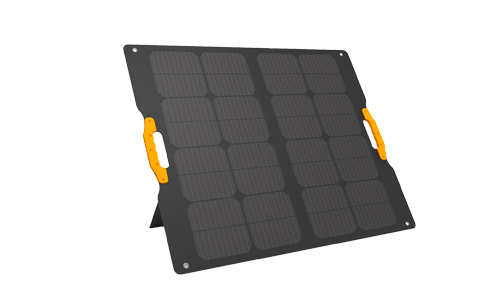
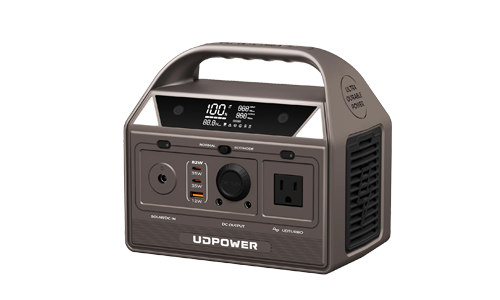
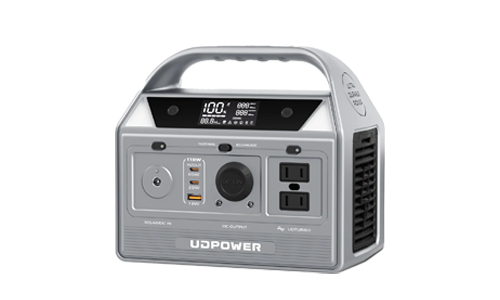
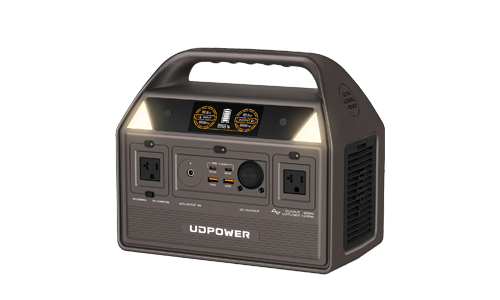
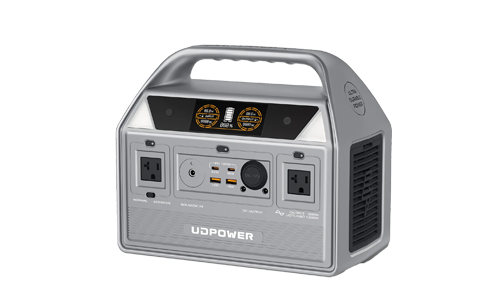


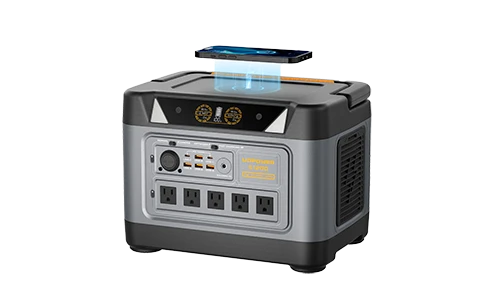


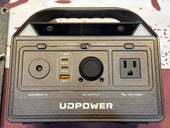
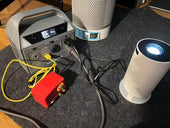
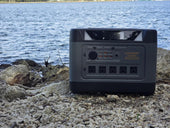






















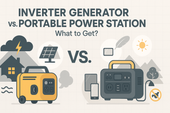









![How to Live In The Woods [Complete Guide]](http://udpwr.com/cdn/shop/articles/Off-Grid_Cabin_Option_f6c94fe7-1ae7-4c3a-baf5-ed9fe684c832.png?v=1763523215&width=170)




